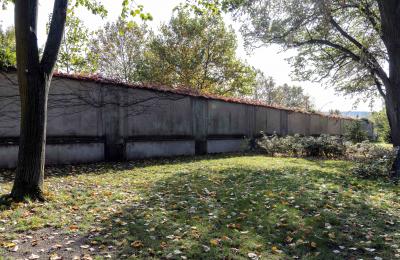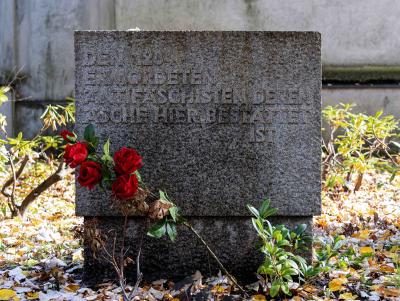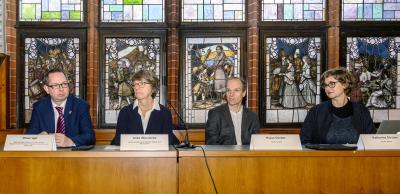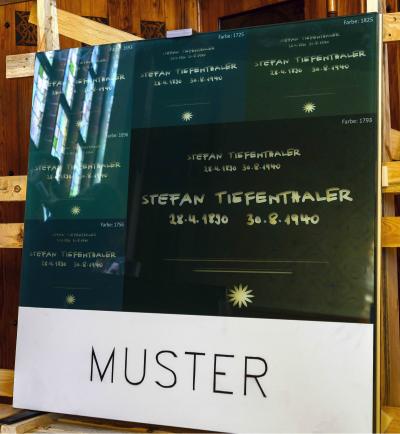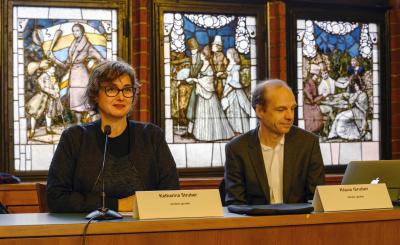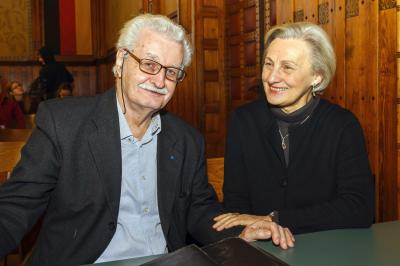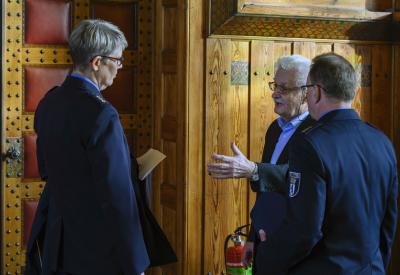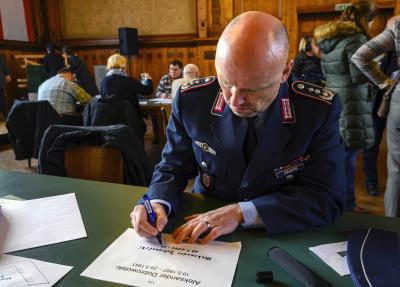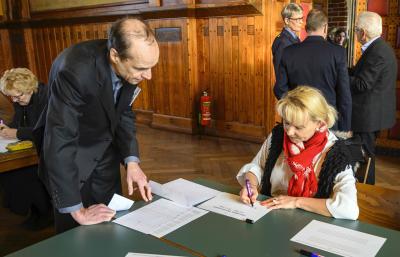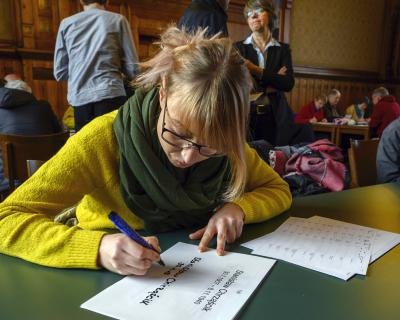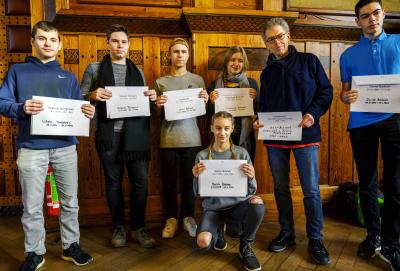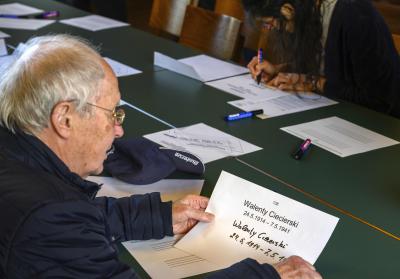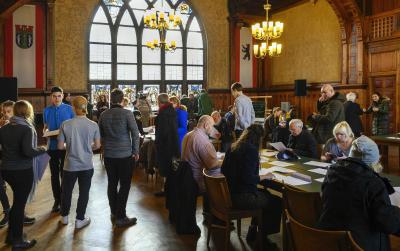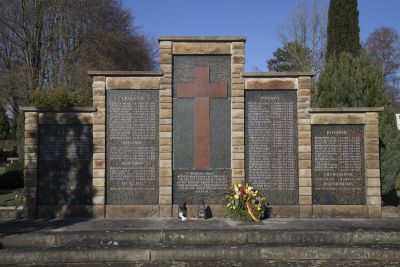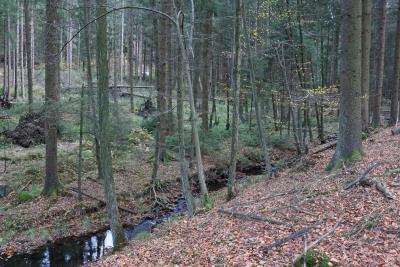Saving them from being forgotten. The Altglienicke Cemetery in Berlin

But the tide began to turn 15 years ago when Klaus Leutner, a retired railway engineer, revealed the secret of the concealed burial grounds along the cemetery wall where, until recently, there had still been an unauthorised rubbish tip: paper, dried up wreaths and flowers were strewn around, and in autumn leaves rotted on the ground. Whilst an unassuming concrete memorial stone had shown that this was the burial place of “anti-fascist fighters” since the 1950s, nobody actually knew anything about it.
Klaus Leutner stated: “Between 1940 and 1943, 1,370 urns were buried there, including 80 urns of those executed at Plötzensee prison.”
Today we know more: we believe that they were opponents of the Nazi regime, victims of euthanasia, and concentration camp prisoners from Buchenwald, Dachau and Sachsenhausen...
But what is particularly important for us Poles are the 430 countrymen who found their last resting place here. After years of painstaking work, much proofing of spellings, including those of the Polish names, the list was finalised by Paweł Woźniak, an active member of the Polish Catholic Mission. It contains sober birth and death dates of the victims, and sometimes information about the profession they carried out, as well as where they came from.
So little, and yet so much...
Amongst the dead are a baker, a carpenter and a locksmith, astonishingly many from the working class; young people, murdered in their twenties. All of those that I randomly checked came from the heartlands of the Second Polish Republic. Why they were arrested and, more importantly, why they were deported to Berlin and murdered there or in Sachsenhausen remains a mystery. Who were they that Reinhard Heydrich and his people were even interested in them? We will never know. Or are there perhaps some traces of their destinies after September 1939 in the chronicles of the towns and villages from which they came?
“Saving them from being forgotten. Giving the dead their identity back. Ripping them from the vicious circle of anonymity”. In our first conversation, Klaus Leutner remembers this as one of the solutions submitted for the competition advertised by the Berlin Senate. For the authors of the winning project, the Austrians Katharina Struber and Klaus Gruber from the Arbeitsgemeinschaft struber_gruber, and the architect’s office outside - landschaftsarchitektur, ‘living memory’ was the main impetus for the redesign of this burial site. With this in mind, they decided to look for a ‘godparent’ for each person buried there. They should then record in their handwriting just the name and dates of birth and death of the deceased. For them these individual scripts, which are supposed to light up brightly in the green glass, represented the heart of the place of remembrance. They chose this form because they believed that the responsibility for commemoration and remembrance lies with those living today. The artistic-architectural form of the memorial also allowed a place of information and remembrance to be created to allow the surviving dependents to grieve properly. The realisation of the extraordinary idea was shaped by the fact that many of those next generations were involved in the project.
However, getting to that point was anything but easy, particularly because of the visionary design which Polish employees of the Catholic Mission had come up with. They complained that there was “no symbolism” in the award-winning project and continued: “An important symbol for us Poles [author’s emphasis- W.D.] would be a cross - not only for our religion but also for the civilisation of the last 1,000 years.” The names should also be carved into stone tablets. In this context, Mr Woźniak found the project, which had received the award and was due to be actioned, “amateurish”.
I ask myself what right Woźniak has to voice his opinion on behalf of all Poles and whether Polish tradition can only be represented by stone carvings and the erecting of crosses wherever a Pole has ever set foot... And what about the Jewish prisoners that are buried here...? Mr Woźniak has not even thought about them. And that is not all: In the Polish world, voices are clamouring for the ashes of a murdered victim, for example a priest, to be symbolically moved to his native soil. That is to say: “As a symbolic gesture: A Pole returns home after 70 years.”
I ask: Why should they be the ashes of a Polish priest and not those of a Polish craftsman or tailor? This is a classic example of emotions running unnecessarily high again and all reason being push aside. Just a reminder: In the urns on a field of remembrance, the ashes of the various persons entered in the cemetery register for areas U1 and U2 may or may not be at rest there (there is no guarantee). The reason for this is easy to understand: In the crematoria in Berlin, as in Sachsenhausen concentration camp later on, several people were all cremated together in a furnace and their ashes were then put in a container. For this reason, exhuming and transferring the ashes to Poland would be nothing more than a “trade in relics” for political purposes.
Thankfully, it did not happen. The proposal put forward by the Catholic Mission was not pursued.
The project is due to be realised in autumn 2020. Its implementation is now only dependent on progress being made in fabricating the “commemorative glass plaques” and in installing them securely in the cemetery.
Up to now...
On 27 January, the Day of Remembrance for Victims of Nazism, individuals, pupils from neighbouring schools, members of the police force and of the armed forces appeared in Köpenick town hall to give those who died and those who were murdered their identity back with their own individual scripts. The “script godparents” also included civil servants from the municipal authority as well as passers-by who happened to get involved and... Polish friends.
All are equal before history.
Irrespective of their heritage, their profession and their belief.
And that is how it should stay.
Wojciech Drozdek, march 2020
More on this project and its realisation can be found on this website at: https://www.erinnerungsort-altglienicke.de/erinnern-und-gedenken-an-1364-tote/

